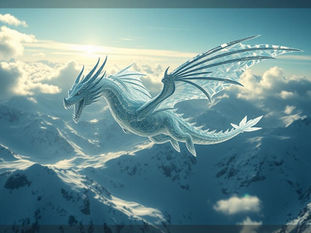
Creating Videos with Midjourney: A First Look at Model 1.0
Jul 29
4 min read
0
10
0

Midjourney recently released its 1.0 video model, a highly anticipated addition to its creative tools. This initial version is a strong starting point, especially since it's available to users on the most basic $10 plan. This is different from the high costs of other new AI video models. While Midjourney monitors demand, now is a good time to try out this feature.
Understanding how Midjourney uses your fast hours is key. Fast hours allow you to generate images or videos quickly, putting your requests at the front of the line. Once these hours are used, if your plan includes 'relax mode,' your requests can still be processed, but they will take longer, sometimes hours during peak times.
Pricing and Usage for Video Generation
For images, you get relax mode with the $30 standard plan. However, for video, relax mode is only available on the $60 Pro plan. The basic plan provides 3.3 fast hours. Creating a single video can use up to a minute of fast hours. This is enough for experimenting. If you plan to make many AI videos with Midjourney, consider a higher plan.
To make the most of your Midjourney video creations, especially as you explore higher output volumes, check out the Midjourney Automation Suite from TitanXT. It can help you manage your generations efficiently.
Your Guide to Creating Videos
Image-to-Video: The Core Workflow
Midjourney’s video feature works by turning images into videos. This means you first create an image using a text prompt, then turn that image into a video. This process is straightforward. While the options might seem simple compared to open-source video models, Midjourney often makes up for it with good video quality and often follows instructions well.
To get started with video, select the "Add Image" option in your Midjourney interface. Look for "Starting Frame." Here, you can pick images you've made before on Midjourney or upload your own. Remember to follow Midjourney’s guidelines for responsible use of uploaded content.
Basic Animation Options: Auto vs. Manual
After selecting an image, you'll see the "Animate Image" section. You have two main choices: "Auto" and "Manual."
[B]Auto:[/B] This option reuses your image's original prompt and tries to animate it with either "low motion" or "high motion."
[B]Manual:[/B] This allows you to change the prompt. You can guide the video generation with new instructions, even if they differ from the original image prompt.
When trying the manual option, you can adjust settings like motion intensity (low or high) and speed (fast or relax mode, depending on your plan). For example, if you prompt for a woman's kimono to flutter in the wind while a fox speaks, with no camera movement, you can see how Midjourney tries to animate those specific elements.
Analyzing Video Outputs and Their Quality
Reviewing Different Animation Attempts
Midjourney generates videos in sets of four. If you hover over a video, all four versions will play. Initial automatic animations can have varied outcomes. For instance, a complex prompt for a woman and a fox might lead to unexpected character movements or camera shifts, even when asked not to move.
The model often performs better with simpler movements, like a dancing chicken or a character turning their head. It also handles basic camera movements well, such as a subtle pan. The generated videos often have a distinct Midjourney aesthetic, which is a key part of their style. Interestingly, if you use the 'Auto' feature, Midjourney sometimes adds its own motion prompts based on its analysis of your image, helping guide the animation.
Tips for Better Results
While Midjourney's video model can produce engaging results, especially for subtle animations, it finds it hard with busy scenes or specific-action demands. Simple movements or character actions tend to look more natural. Complex action sequences, like characters fighting or rapid motion, might lead to inconsistencies. For character consistency in action scenes, other AI video models might be more effective.
To help with tasks like generating multiple short videos or managing iterative attempts, the Midjourney Automation Suite from TitanXT can be very helpful.
Extending Your Videos
Longer Videos: Auto and Manual Extensions
By default, Midjourney generates videos that are 5 seconds long. You can extend these videos. You have two ways to do this:
[B]Extend Auto:[/B] This is like the 'Auto' feature for initial generation. It extends the video by another 5 seconds and will add automatic prompts if needed.
[B]Extend Manual:[/B] This lets you guide the next 5 seconds with a new prompt, offering more control over the flow of the video. You can continue adding segments up to a total of 21 seconds.
One notable strength of Midjourney’s video model is its speed. It generates results very quickly, which is impressive for the quality it delivers.
For example, an attempt to extend a video of a dragon to include fire and a city's destruction might show mixed outcomes. The fire effect might improve in extended segments, but the overall scene of destruction might not fully match the specific prompt. This highlights that while extensions are possible, guiding complex actions over longer periods still needs careful prompting and experimentation.
Final Thoughts and Moving Forward
Midjourney's 1.0 video model is a great tool for simple image animations, subtle character movements, and basic scene changes. It performs well in these areas. However, for serious AI video creators who need complex action or strict prompt accuracy across many elements, Midjourney might be best used alongside other AI video models.
As the model develops, new prompting guides will surely emerge. Exploring how Midjourney's unique aesthetic can combine with different animation needs will be fun. To streamline your video generation process and get more from your Midjourney experience, consider using the Midjourney Automation Suite from TitanXT.






